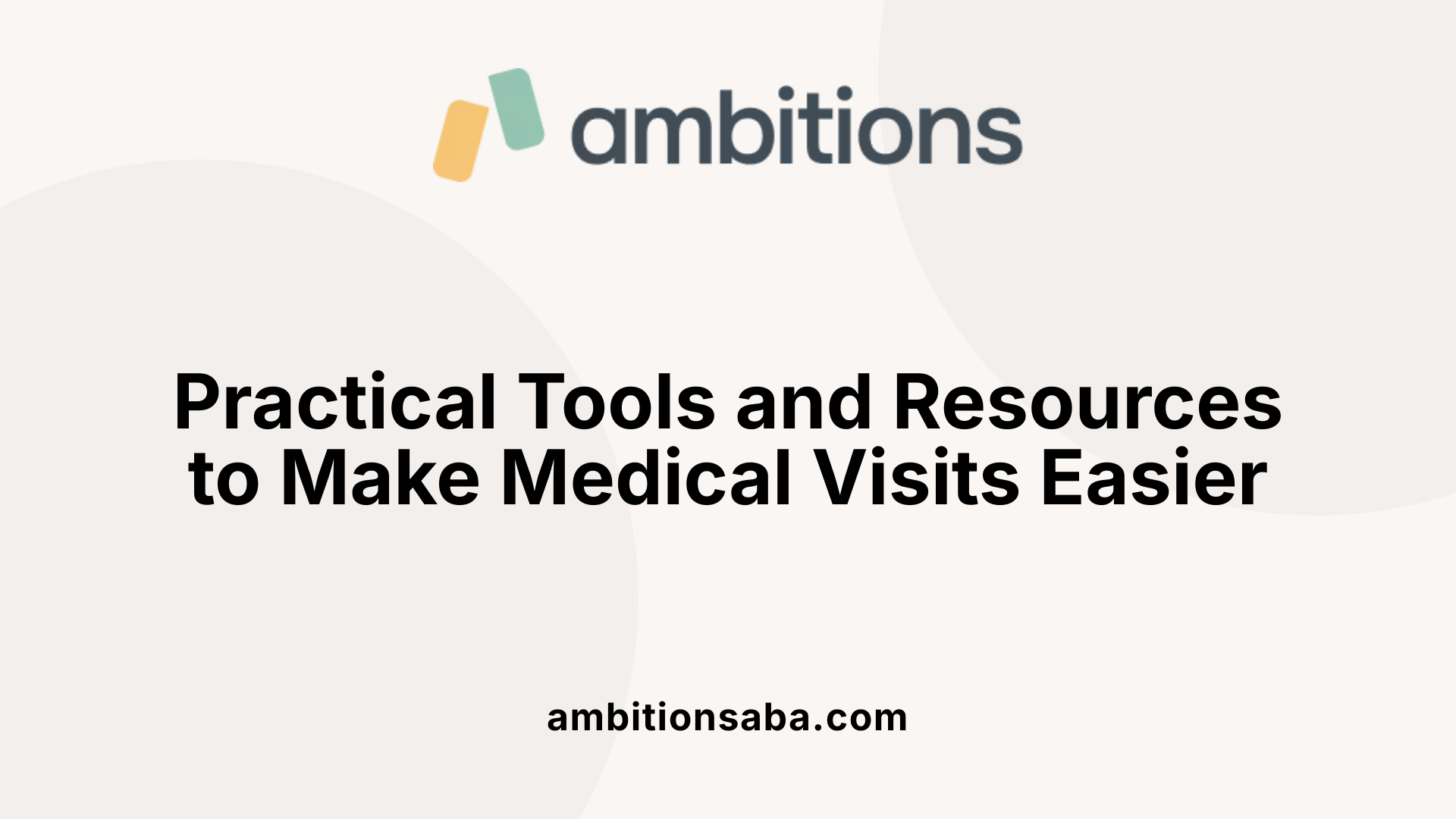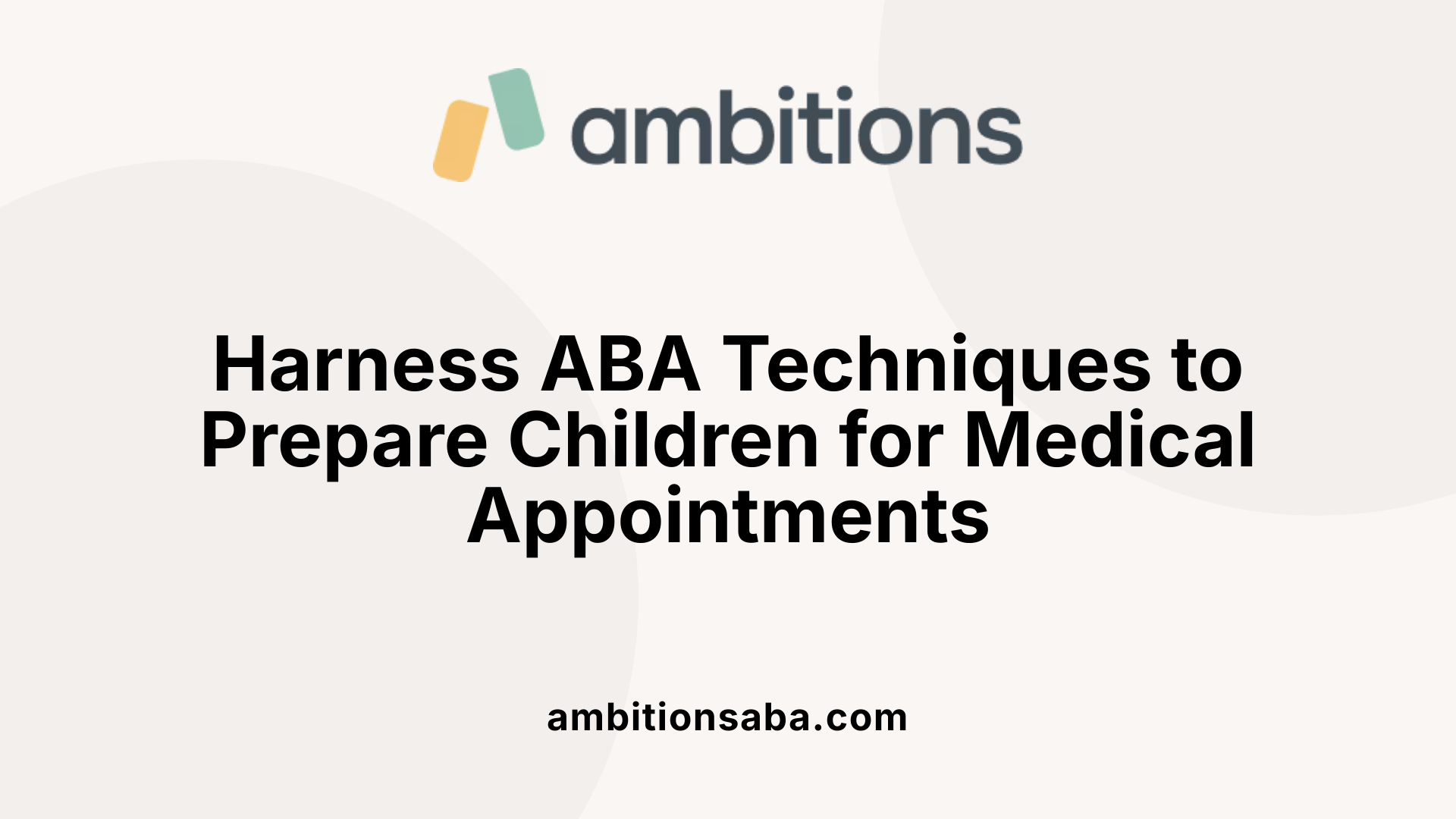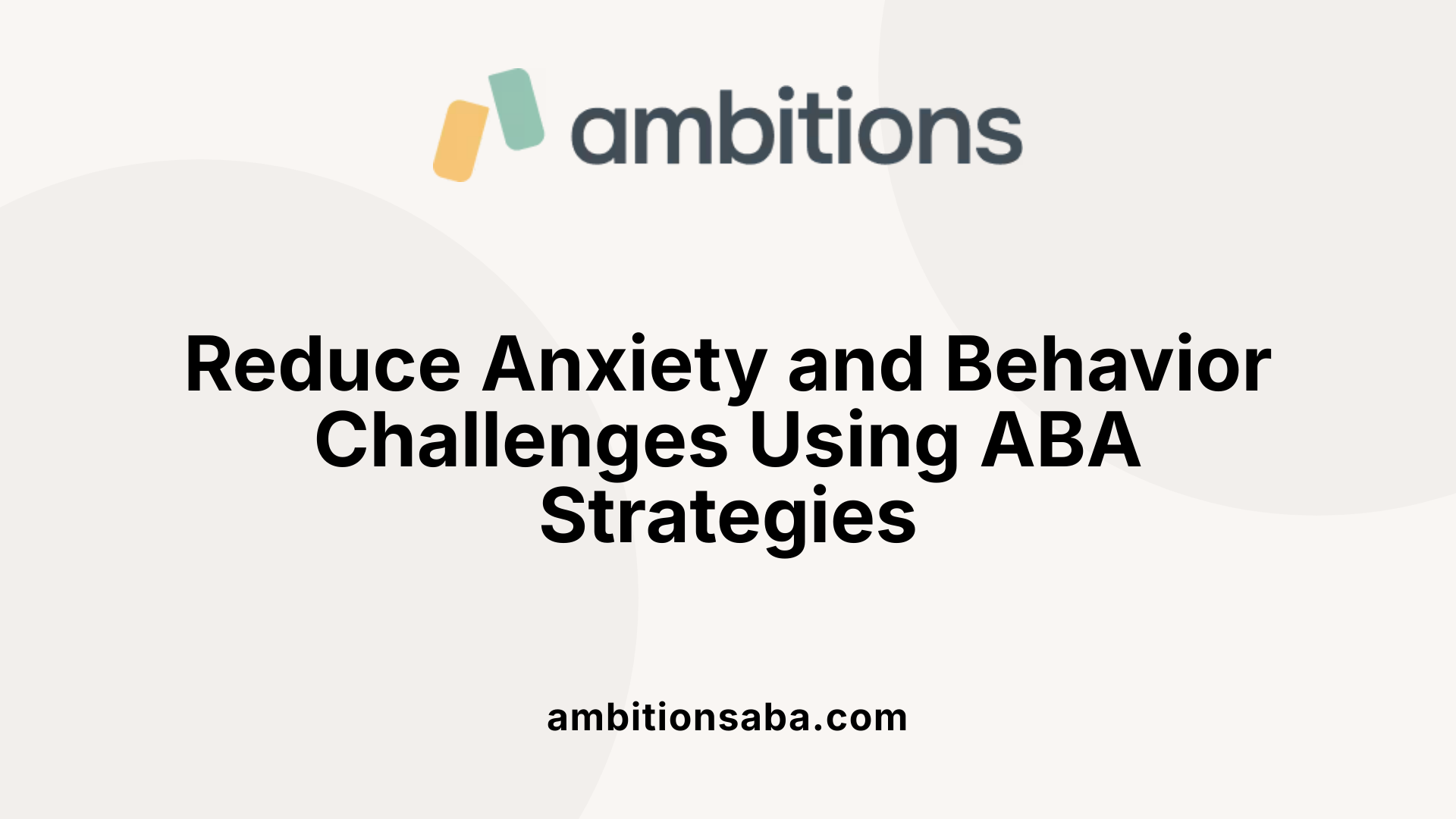Empowering Natural Learning Moments at Home
Making Medical Appointments More Comfortable for Children with Autism
Medical visits can be stressful for children with autism due to sensory sensitivities, anxiety, and difficulty understanding unfamiliar routines. Applying principles of Applied Behavior Analysis (ABA) offers effective strategies to prepare children, reduce anxiety, and foster cooperation. This article explores comprehensive approaches for caregivers and healthcare providers to utilize ABA techniques, supported by resources and practical tips, to ensure smoother, less traumatic medical experiences.
Understanding the Needs of Children with Autism During Medical Visits

What are some general strategies for preparing children with autism for medical appointments?
Children with autism often feel more comfortable when their environment and routines are predictable. Preparing for medical visits involves several practical steps that can ease anxiety and improve cooperation.
One effective method is to familiarize the child with the upcoming visit beforehand. Using visual supports such as pictures, social stories, or even virtual tours of the medical setting can help the child understand what to expect. Role-playing with toy medical kits or practicing some of the procedures at home can make the experience feel more familiar and manageable.
Creating a visual schedule with symbols or pictures that outline the visit steps helps children anticipate what will happen next. Bringing familiar objects like a favorite toy or comfort item into the appointment can provide reassurance.
Engaging healthcare providers in advance to discuss specific accommodations—such as reducing wait times, scheduling during quieter hours, or having a designated staff member aware of the child's needs—can make a significant difference. During the visit, using sensory tools like noise-cancelling headphones or sunglasses, along with distraction devices like tablets or favorite toys, can help maintain calmness.
Positive reinforcement, such as praise or small treats (avoiding edible rewards for health reasons), encourages cooperation. Relaxation techniques, such as deep breathing or calming sensory activities, can also support children throughout their appointment.
Overall, a personalized approach that considers each child's unique sensitivities and preferences, combined with proactive planning and collaboration with healthcare staff, can greatly improve the experience of medical visits for children with autism.
Practical Resources and Techniques to Improve Medical Experience
 Children with autism often find medical visits challenging, but certain resources and strategies can make these experiences more manageable. Visual supports, such as social stories and picture schedules, play a crucial role. These tools help children understand what to expect step-by-step, reducing uncertainty and anxiety. For example, a visual schedule might show pictures of arriving at the clinic, seeing the doctor, and getting a check-up, providing a clear roadmap of the visit.
Children with autism often find medical visits challenging, but certain resources and strategies can make these experiences more manageable. Visual supports, such as social stories and picture schedules, play a crucial role. These tools help children understand what to expect step-by-step, reducing uncertainty and anxiety. For example, a visual schedule might show pictures of arriving at the clinic, seeing the doctor, and getting a check-up, providing a clear roadmap of the visit.
Sensory accommodations are also vital. Bringing comfort items like a favorite toy or blanket, using noise-cancelling headphones, or sunglasses can help children manage sensory sensitivities. Healthcare providers may modify the environment by dimming lights or creating quiet areas to reduce sensory overload.
Preparation activities at home, like role-playing medical visits or practicing simple procedures — such as opening the mouth or saying "ah" — can build familiarity and resilience. These rehearsals help children anticipate procedures and foster cooperation during the actual visit.
Many resources exist to support families and providers in making medical appointments less stressful for children with autism. Training programs for medical staff enhance understanding of autism-specific needs. Collaboration with specialists like child life professionals can provide additional support.
A coordinated approach that includes visual aids, sensory supports, and practical rehearsals creates a comforting environment where children can feel more in control. By utilizing these strategies, families and healthcare teams can work together to ensure a positive experience that promotes health and trust.
| Resource Type | Description | Benefits |
|---|---|---|
| Visual Supports | Social stories, picture schedules | Reduce anxiety, improve understanding |
| Sensory Tools | Noise-cancelling headphones, sunglasses | Minimize sensory overload |
| Environmental Adjustments | Quiet, dimmed lighting spaces | Create calming environments |
| Practice Activities | Role-playing, home rehearsals | Increase familiarity, cooperation |
| Professional Training | Autism-specific healthcare training | Better tailored care |
Leveraging ABA Techniques for Medical Appointment Preparation

How can Applied Behavior Analysis (ABA) techniques be used to prepare children with autism for medical visits?
ABA, or Applied Behavior Analysis, offers effective strategies to help children with autism navigate medical appointments more smoothly. One of the primary approaches involves using visual supports such as social stories, picture schedules, and visual timers. These tools provide a predictable structure, helping children understand what will happen next and reducing feelings of anxiety.
Creating social stories with pictures or drawings describing each step of a medical visit helps familiarize children with the process, making it less intimidating. Breaking down procedures into small, manageable steps—like sitting in the dental chair or opening their mouth—can also make tricky tasks more approachable.
Gradual exposure or systematic desensitization is another key method. This might involve visiting the clinic beforehand, taking short tours, or role-playing medical scenarios at home. Over time, these exposures help children build comfort and confidence.
Reinforcement is crucial for encouraging positive behavior. Using praise, preferred toys, or rewards after completing each step encourages children to cooperate and participate willingly. It’s important to match reinforcers to the child's preferences for maximum effectiveness.
Additionally, pre-visit preparations such as showing the child pictures of staff, the environment, and equipment help create familiarity. Incorporating familiar items like a favorite toy or blanket during the visit can provide additional comfort.
Healthcare providers and family members should communicate about the child's specific needs and triggers. Distraction tools like tablets, books, or sensory objects—like noise-cancelling headphones—help manage sensory sensitivities.
Integrating these ABA-based strategies fosters a calmer, more cooperative dental or medical visit. The goal is to gradually increase the child's independence and comfort, turning potentially stressful experiences into manageable situations that support ongoing health and well-being.
Guidance for Caregivers on Implementing ABA During Preparation
How can visual supports and social stories help during medical appointment preparation?
Visual supports such as pictures, symbols, or social stories play a crucial role in preparing children with autism for medical visits. These tools clearly depict each step of the process, helping children understand what to expect and reducing uncertainty. For example, a social story might show images of a child sitting in the waiting room, talking to the doctor, or lying down on the examination table. When children are familiar with the procedure through visual cues, they often feel more comfortable and less anxious.
What are some positive reinforcement techniques that caregivers can use?
Positive reinforcement involves rewarding children for displaying cooperation and calmness. Caregivers can use praise, extra playtime, or favorite items, such as tablets or toys, to motivate children during medical routines. It is important to choose reinforcers that are meaningful to the child and to deliver them immediately after the desired behavior. This consistent positive feedback encourages children to repeat adaptive behaviors and helps them associate healthcare visits with positive experiences.
How can practice and role-playing activities improve appointment experiences?
Practicing specific procedures through role-playing or mock appointments can significantly boost a child's confidence. Caregivers can simulate the medical visit at home using toys, dolls, or family members acting as healthcare providers. Practicing tasks like opening the mouth, staying still, or getting on the examination table prepares the child mentally and physically. Repeated practice helps children become familiar with routines, decreases fear, and increases their ability to tolerate medical procedures.
| Strategy | Description | Benefits |
|---|---|---|
| Visual supports & social stories | Use pictures and stories to explain what will happen during visits | Reduces anxiety; improves understanding |
| Positive reinforcement | Offer rewards immediately after cooperation | Increases compliance and motivation |
| Practice & role-playing | Simulate visit scenarios at home | Builds confidence; familiarizes child |
Implementing these techniques consistently across visits and involving the child in planning can make healthcare experiences smoother and less stressful for children with autism. It also supports caregivers in creating a predictable environment that promotes learning and comfort.
Benefits of Using ABA in Medical Management for Children with Autism
 Applying Applied Behavior Analysis (ABA) techniques in medical settings offers numerous advantages for children with autism. One of the primary benefits is the substantial reduction in anxiety and behavioral challenges during visits. ABA helps children develop coping mechanisms and communication skills, which can make medical appointments less overwhelming and more manageable.
Applying Applied Behavior Analysis (ABA) techniques in medical settings offers numerous advantages for children with autism. One of the primary benefits is the substantial reduction in anxiety and behavioral challenges during visits. ABA helps children develop coping mechanisms and communication skills, which can make medical appointments less overwhelming and more manageable.
Moreover, ABA strategies improve cooperation and compliance. When children understand what to expect and are gradually trained to follow instructions, procedures tend to go more smoothly. This approach also minimizes behaviors like tantrums, escape attempts, or aggression, creating a safer environment for both the child and medical staff.
Effective communication is another key area where ABA helps. By teaching children to express their needs and understand instructions, ABA enhances their overall safety and comfort during procedures. This personalized, step-by-step training builds confidence, making future visits less stressful.
In summary, integrating ABA into medical management creates a positive cycle of improved behavior, increased cooperation, and reduced anxiety. These improvements help ensure that children with autism receive necessary healthcare without unnecessary distress, fostering better health outcomes and a more positive experience for everyone involved.
Supporting Children with Autism Through ABA in Medical Settings
When effectively integrated, ABA techniques can transform medical visits into positive, manageable experiences for children with autism. Through careful planning, resource utilization, and tailored behavioral interventions, caregivers and healthcare professionals can significantly reduce anxiety, improve cooperation, and foster a sense of safety. Building familiarity, employing visual supports, and reinforcing positive behaviors not only enhance current appointments but also empower children with skills that support their overall health and well-being. By prioritizing individualized strategies and accessible resources, we can ensure that children with autism receive respectful, effective medical care that promotes their comfort and independence.
References
- Prepare for the Doctor Visit with Your Child with ASD
- Meeting the Needs of Children With Autism Spectrum Disorder ...
- The Top 10 Reasons Children With Autism Deserve ABA
- Preparing an Autistic Child for Dentist Appointments
- Management of Autistic Patients in Dental Office: A Clinical ...
- The 5-Minute Guide On How To Make An Autism-Friendly ...
- Prepare for the Doctor Visit with Your Child with ASD
- The Controversy Around ABA
- How to prepare your autistic child for dental visits
- 7 Strategies to Help Autistic and Special Needs Kids ...

